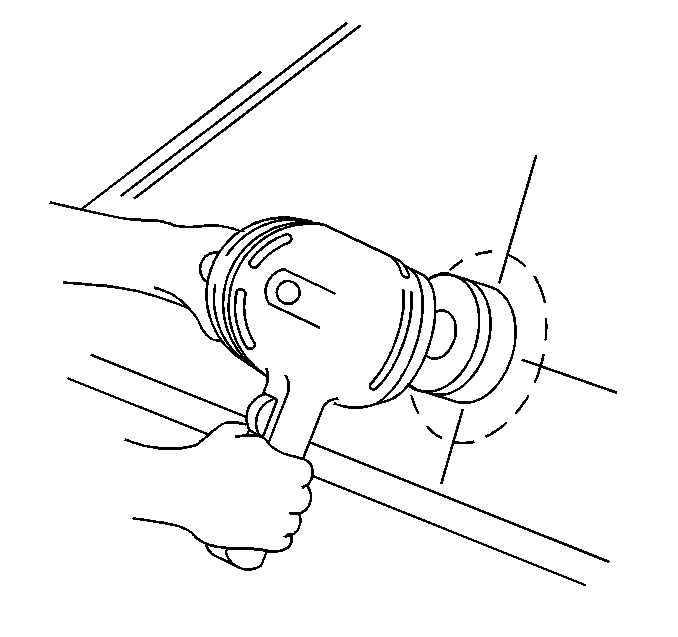For 1990-2009 cars only
Minor Scratch and Abrasion Removal
- Remove or reduce minor scratches and abrasions by following the polishing procedure.
- Take precautions in order to prevent distortions of vision.
- Double vision may result if an attempt is made to remove deep scratches. Do not remove deep scratches from an area in the driver's line of vision. Replace the glass.
- The following procedure was developed using a cerium oxide compound. Following the manufacturer's directions when any other materials are used.
Recommended Equipment
| • | A low speed (600-130 RPM) rotary polisher. |
| • | A wool felt, rotary polishing pad 76 mm (3 in) in diameter and 51 mm (2 in) thick. |
| • | Powered cerium oxide mixed with water. This is the abrasive compound. |
Polishing Procedure
- Mix at least 44 ml (1.5 oz) of the cerium oxide compound with enough water to obtain a creamy consistency.
- Draw a circle around the scratches on the opposite side of the glass with marking crayon or equivalent.
- Draw a line directly behind the scratches in order to serve as a guide for locating the scratch while polishing.
- Cover the surrounding area with masking paper in order to catch the drippings or splattered polish.
- Dip the felt pad attached to the polisher into the mixture.
- Polish the scratched area. When polishing the scratched area, note the following items:

| • | If the mixture is too thick it will cake on the felt pad more quickly. |
| • | If the mixture is too runny, more polishing time will be required. |

| • | Do not submerge the pad. |
| • | Do not allow the pad to stay in the mixture as it may loosen the bond between the pad and the metal plate. |
| Notice: Never hold the tool in one spot or operate the tool on the window any longer than 30 to 45 seconds. If the window becomes hot to touch, let it air cool before proceeding further. Cooling with cold water may crack heated window. Avoid excessive pressure. It may cause overheating of the window. |
| • | Agitate the mixture as often as needed in order to maintain the creamy consistency of the cerium oxide compound. |
| • | Use moderate but steady pressure when applying the polish. |
| • | Hold the pad flat against the glass. |
| • | Use a feathering-out motion. |
| • | Dip the felt pad into the cerium oxide mixture every 15 seconds in order to ensure that the wheel and the glass are always wet during the polishing operation. A dry pad causes excessive heat to develop. |
| • | Keep the pad free of dirt and other foreign substances. |
